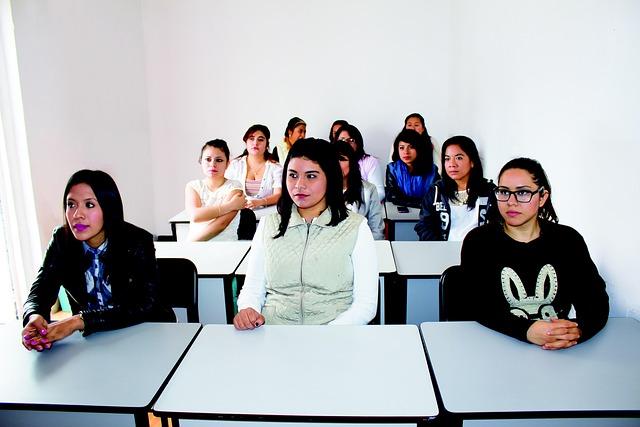Addressing the Decline in International Student Enrollment at U.S. Universities
Challenges Facing U.S. Higher Education Amid Falling International Enrollment
American universities are currently confronting a significant drop in the number of international students enrolling, a trend that disrupts both financial stability and campus diversity. This decline stems from a combination of factors such as more stringent visa regulations, rising tuition costs, intensified global competition, and persistent geopolitical uncertainties. Institutions that once depended heavily on international applicants now face difficulties in maintaining enrollment numbers, securing funding, and preserving their status as global education leaders.
Primary obstacles contributing to reduced international enrollment include:
- Lengthy and complicated visa application procedures deterring prospective students
- Escalating tuition fees limiting affordability for many applicants
- Geopolitical tensions creating an unwelcoming environment for foreign students
- Emergence of alternative education destinations such as the UK, Germany, and New Zealand
| Institution Type | Enrollment Decline (%) | Main Contributing Factor |
|---|---|---|
| Public Universities | 13% | Funding Shortfalls |
| Private Universities | 9% | Visa Policy Barriers |
| Community Colleges | 6% | International Competition |
Economic and Societal Consequences of Fewer International Students
The shrinking population of international students in U.S. higher education institutions is having far-reaching effects beyond campus borders. Financially, universities are losing a vital source of revenue, as international students typically pay full tuition without financial aid. This shortfall threatens the sustainability of academic programs, research initiatives, and student services. Moreover, local economies that rely on student spending in housing, food, and retail sectors are experiencing downturns. Recent studies estimate that a 10% reduction in international enrollment could result in a loss of over $4 billion annually in economic activity in college towns nationwide.
- Declining tuition income strains university budgets
- Local businesses face reduced patronage and revenue
- Employment opportunities diminish in both campus and surrounding communities
From a cultural standpoint, the decrease in international students limits the diversity of perspectives and experiences that enrich academic discourse and campus life. The absence of vibrant cross-cultural interactions reduces opportunities for students and faculty to engage in global dialogue, which is essential for fostering innovation and cultural competence. This shift also risks narrowing the scope of academic programs, with fewer courses focused on international studies or global issues, thereby impacting the cultural literacy of the student body.
| Area of Impact | Immediate Effect | Long-Term Outcome |
|---|---|---|
| University Finances | Budget cuts | Reduced scholarships and program eliminations |
| Local Economy | Lower consumer spending | Business shutdowns and rising unemployment |
| Campus Diversity | Diminished cultural exchange | Weakened global perspectives and innovation |
Policy Reforms to Reinvigorate International Student Enrollment
In light of the enrollment downturn, government and educational leaders are implementing reforms designed to make the U.S. a more attractive destination for international scholars. These measures focus on simplifying visa procedures, expanding post-graduation work opportunities, and increasing institutional support for international students. Federal incentives are also being introduced to encourage universities to enhance services such as career counseling and cultural integration programs.
Notable policy initiatives under development include:
- Extending Optional Practical Training (OPT) periods, especially for STEM graduates, to improve employment prospects
- Introducing expedited pathways to permanent residency for graduates with in-demand skills
- Boosting funding for language support and cultural orientation programs on campuses
- Increasing scholarship availability to reduce financial barriers for international applicants
| Policy Reform | Anticipated Benefit |
|---|---|
| Visa Process Streamlining | Reduced wait times and application hurdles |
| OPT Duration Extension | Longer work authorization post-graduation |
| Expanded Scholarships | Improved affordability for international students |
| Enhanced Career Services | Better job placement and retention rates |
University-Level Strategies to Boost Global Appeal
To counteract the decline in international student numbers, universities must adopt innovative approaches that position them as globally competitive and welcoming institutions. Strengthening collaborations with foreign universities and expanding student exchange programs can rebuild international trust and interest. Investing in pioneering research areas such as artificial intelligence, renewable energy, and biotechnology can also attract high-caliber students worldwide. Furthermore, expanding online education offerings enables institutions to reach prospective students who cannot relocate, thereby broadening their global footprint.
Essential strategies for universities include:
- Launching targeted international recruitment campaigns customized for diverse regions and cultures
- Creating inclusive campus cultures that actively celebrate and support multiculturalism
- Providing comprehensive visa and career support tailored to the needs of international students
- Forging partnerships with global industries to offer internships and employment pathways
| Initiative | Expected Outcome | Priority |
|---|---|---|
| Global Academic Partnerships | Broadened recruitment channels | High |
| Online and Hybrid Learning | Expanded access for remote learners | Medium |
| Diversity and Inclusion Programs | Improved student engagement and retention | High |
| Visa and Career Assistance Services | Enhanced satisfaction and success rates | High |
Conclusion: Navigating the Future of International Education in the U.S.
The ongoing reduction in international student enrollment presents a pivotal challenge for American higher education institutions, with significant implications for academic diversity, financial health, and local economies. As universities and policymakers work collaboratively to understand and address the root causes, implementing comprehensive strategies to attract and support international students will be vital. Continuous evaluation of enrollment trends and policy effectiveness will help ensure that U.S. universities remain competitive and inclusive hubs of global learning in the years ahead.







